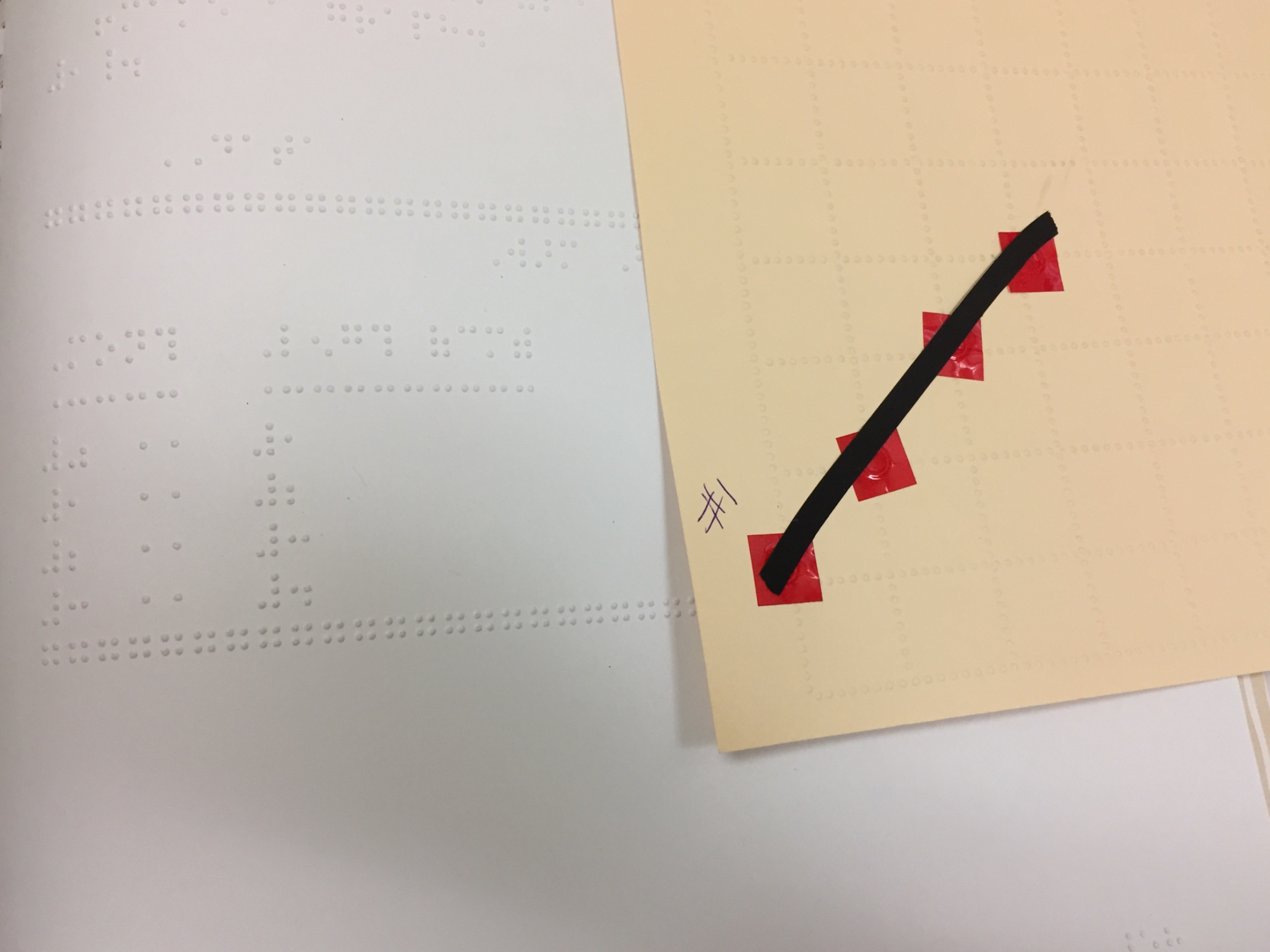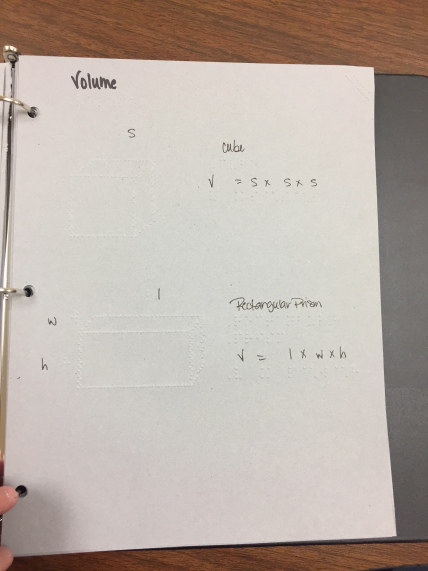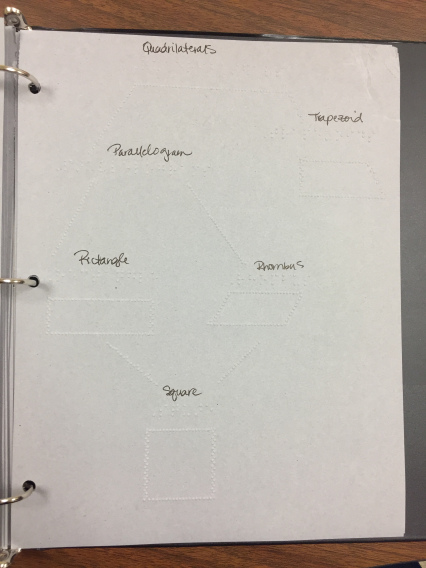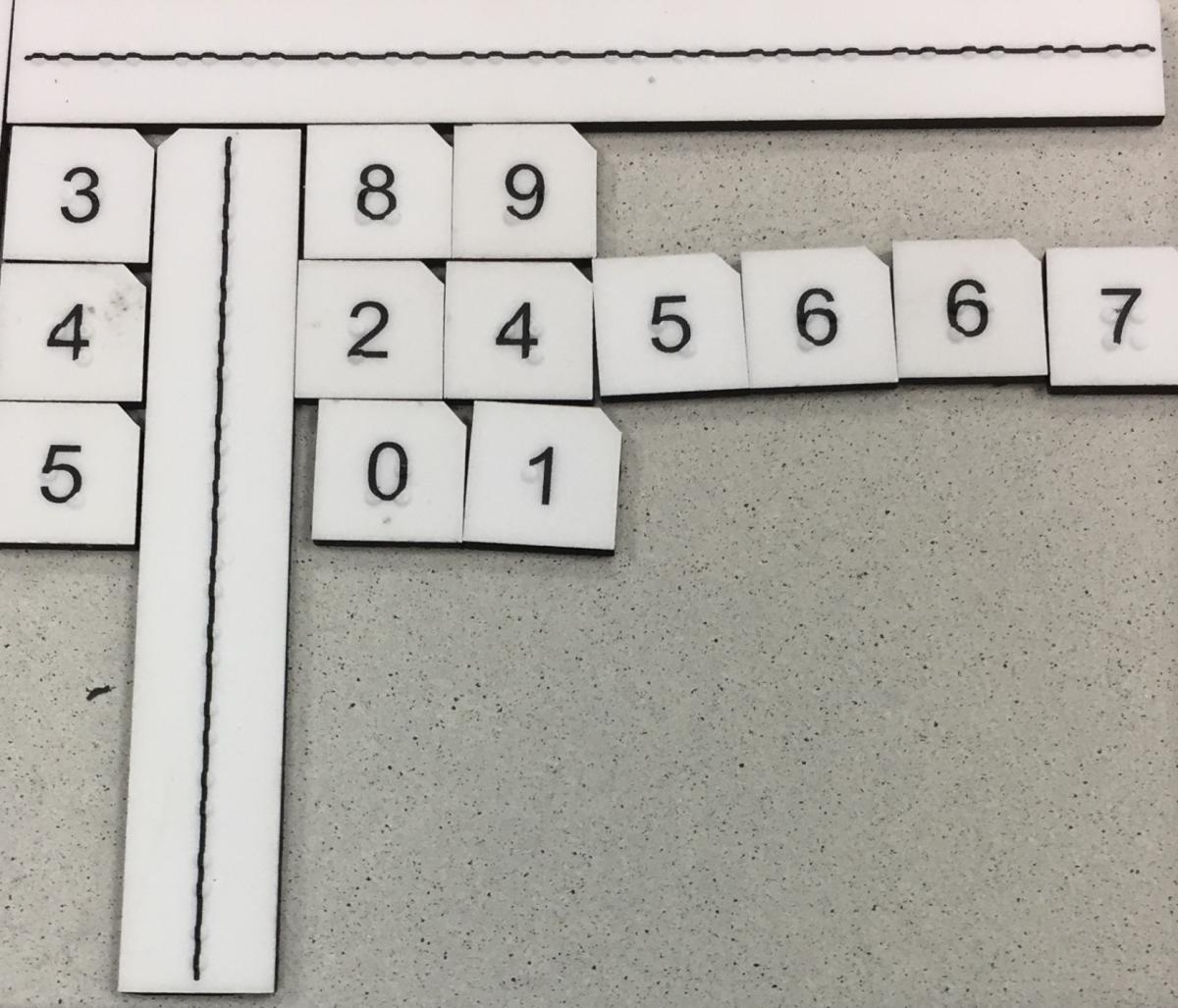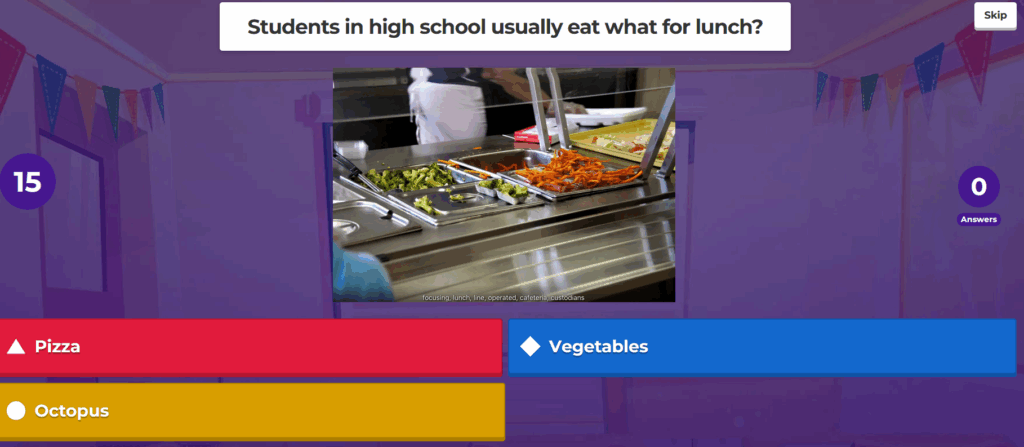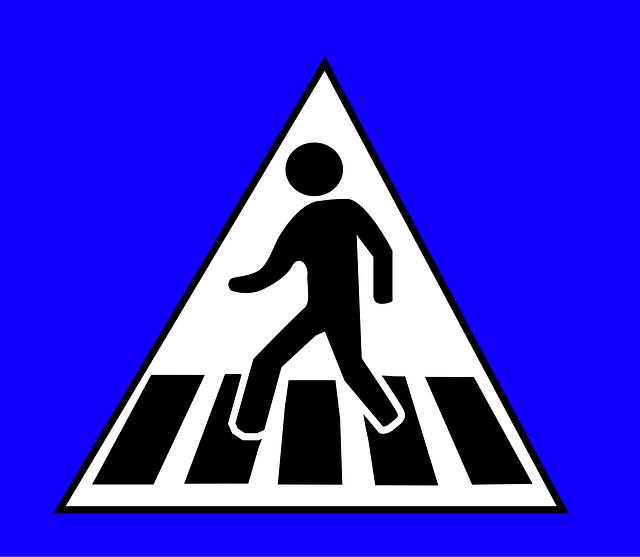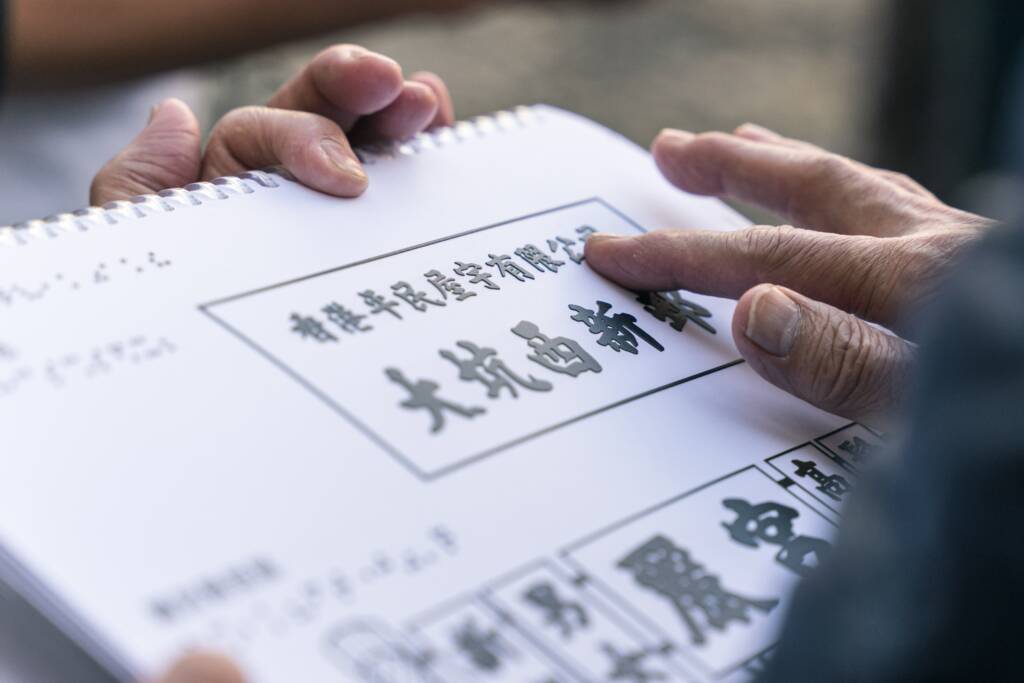There is NEVER enough time in the school day for everything I want to create and accomplish for my students with visual impairments, so having an assortment of low tech options and quick fixes is essential.
Making Notebooks with Reference Concepts and Anchor Charts for Review
The general education classroom is filled with reference posters and anchor charts of overarching themes and concepts for the year. Making a notebook for a student with visual impairments using the same concepts provides a good option for review:
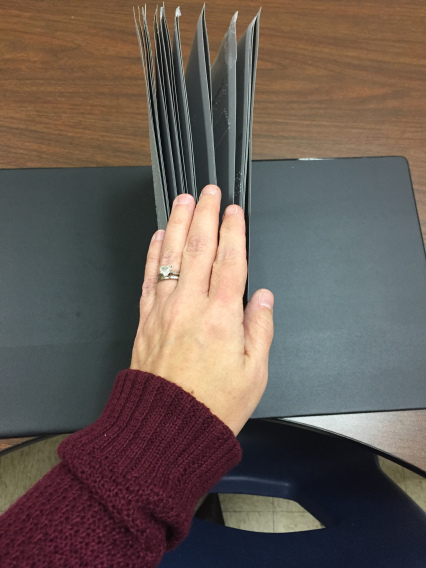
Creating Tactile Graphics
All TVIs love Graphic Art Tape from APH, but when you have lost your last roll and you need an instant replacement, crepe tape or washi tape (available in CUTE colors) do the trick (avoid vinyl art tape, because it can’t be torn into pieces quickly by hand).
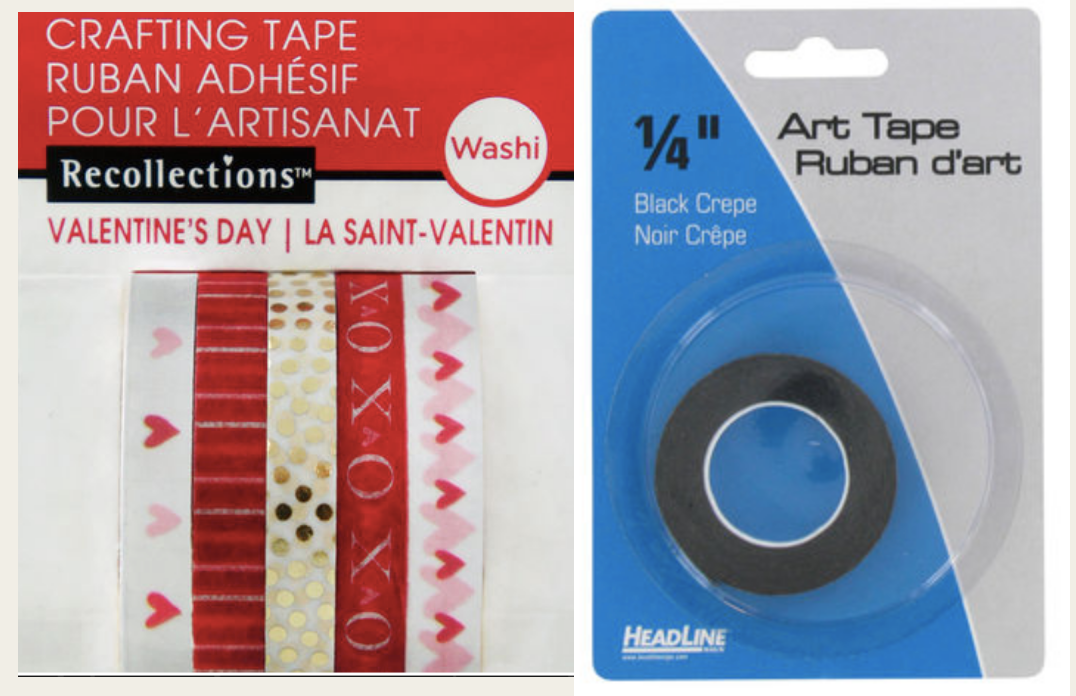
Tactile tape and stickers paired with tactile graph paper are a great way to make tactile graphics. For repeated use, emboss your own graph paper using Permabraille, so stickers and tape can be peeled off and re-used.
Math Window
Another on-the-go favorite is the Math Window, available in Nemeth, UEB math, and Large Print, with add-on kits for algebra and geometry. https://mathwindow.com/ It’s a quick way to “take notes,” practice math concepts, and do shared work with peers or a teacher who doesn’t know braille.
Graphing on the coordinate plane from an “in/out” chart:
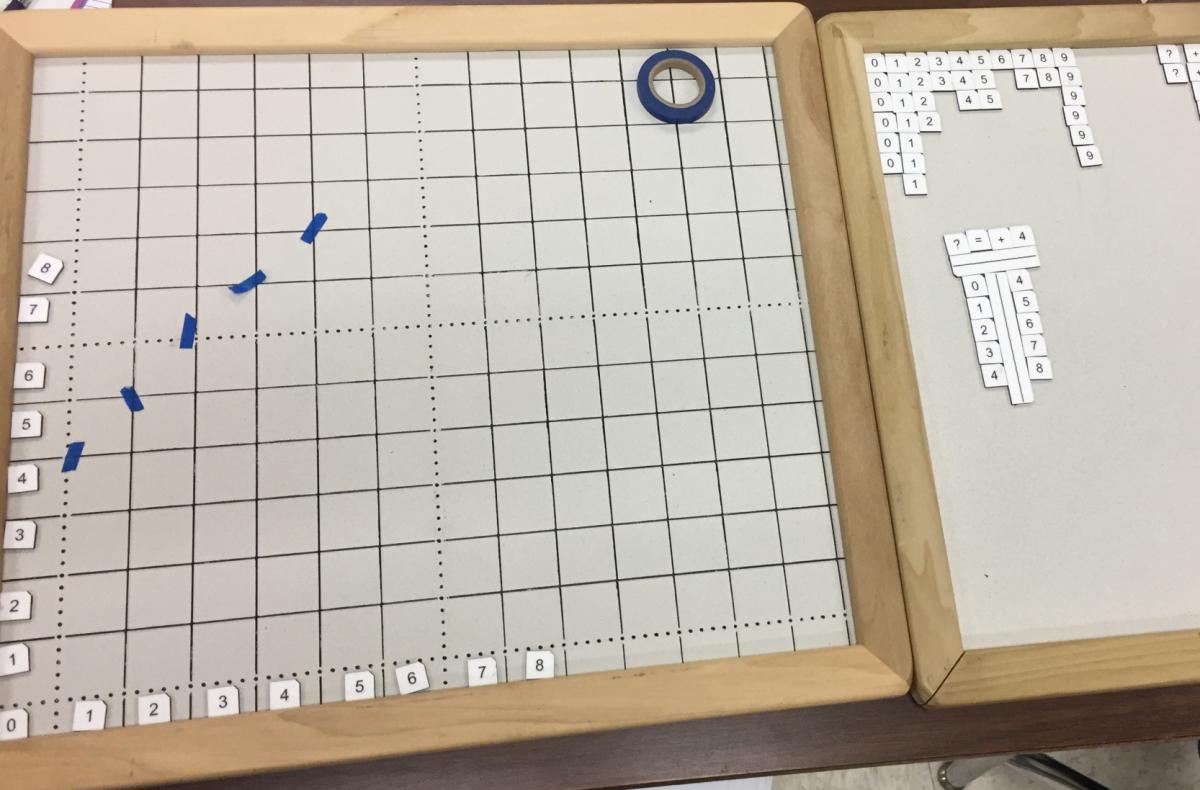
Creating a stem/leaf plot:
Using a Cranmer Abacus to Teach Fractions and Decimals
One topic that is do-able but cumbersome on the Math Window is fractions, especially mixed numbers and multiple operations of fractions. Fortunately, the abacus is a great tool for that. If you don’t remember how/never learned/have no time to refresh, watch this great video from the Columbia Regional Program: The Cranmer Abacus: Unit Four: Fractions & Decimals.
Hint: between working as a TVI by day and on my doctorate at night, I saved time by watching the refresher video on my treadmill!

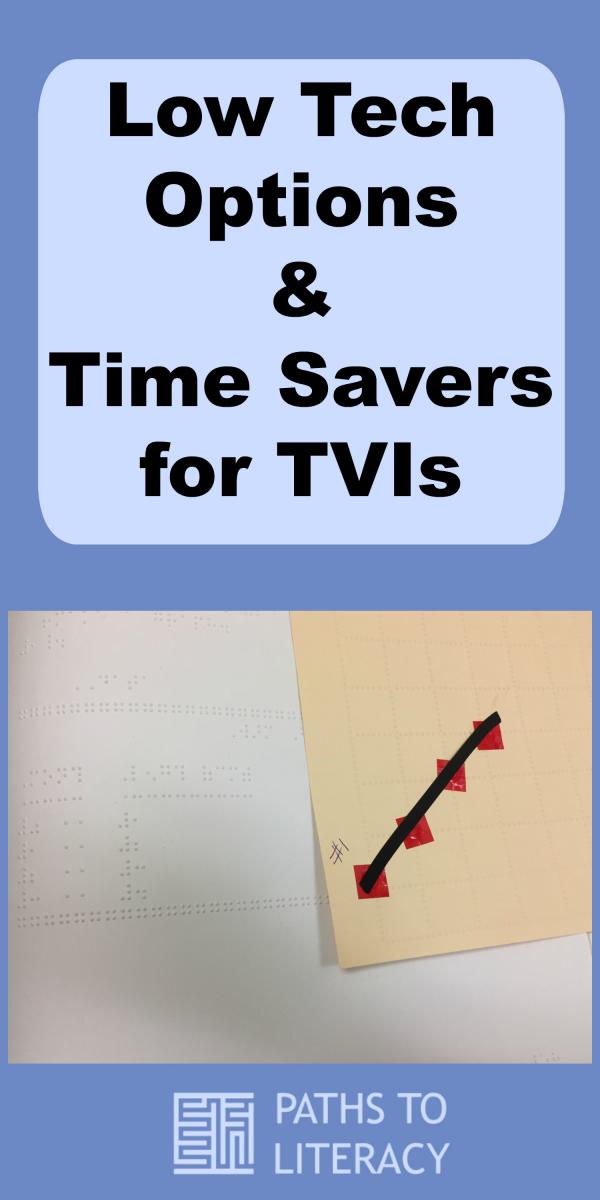
This post was originally published on Our Little Corner of the World.

